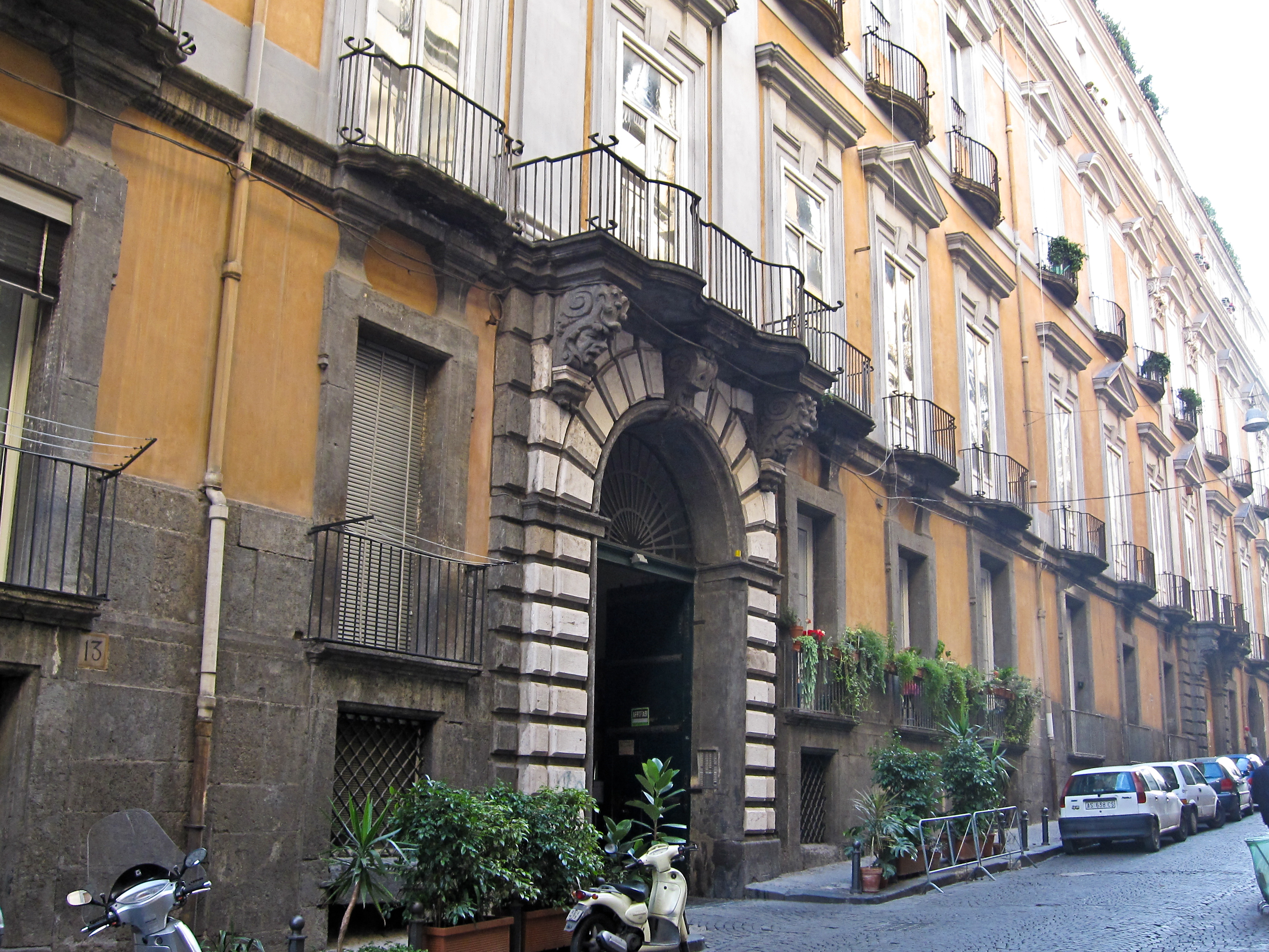Palazzo Serra Di Cassano on:
[Wikipedia]
[Google]
[Amazon]
 Palazzo Serra di Cassano is an aristocratic palace in
Palazzo Serra di Cassano is an aristocratic palace in
 Palazzo Serra di Cassano is an aristocratic palace in
Palazzo Serra di Cassano is an aristocratic palace in Naples
Naples (; it, Napoli ; nap, Napule ), from grc, Νεάπολις, Neápolis, lit=new city. is the regional capital of Campania and the third-largest city of Italy, after Rome and Milan, with a population of 909,048 within the city's adminis ...
, Italy
Italy ( it, Italia ), officially the Italian Republic, ) or the Republic of Italy, is a country in Southern Europe. It is located in the middle of the Mediterranean Sea, and its territory largely coincides with the homonymous geographical ...
, built for the wealthy Serra family, one of the original 54 families of the 'old nobility' of Genoa, whose family was organized within an Albergo. The family insignia (crest) is frescoed on the ceiling of the Palazzo Serra's Great Hall. The family had economic interests in banking, insurance and law.
History
The Palazzo is behind thePiazza del Plebiscito
Piazza del Plebiscito (; nap, Chiazza d''o Plebbiscito) is a large public town square, square in central Naples, Italy.
History
Named after the plebiscite taken on October 21, 1860, that brought Naples into the unified Italian unification#Creat ...
on via Monte di Dio, the road leading up to the height of the Pizzofalcone peak. It was built in 1730 by the architect Ferdinando Sanfelice
Ferdinando Sanfelice (1675 – 1 April 1748) was an Italian late Baroque architect and painter.
Sanfelice was born in Naples and died there. He was one of the principal architects in Naples in the first half of the 18th century. He was a stude ...
, also responsible for the construction of the nearby Nunziatella
The Nunziatella Military School of Naples, Italy, founded November 18, 1787 under the name of ''Royal Military Academy'' (it.: ''Reale Accademia Militare''), is the oldest Italian institution of military education among those still operating. Its b ...
, the Bourbon Military Academy founded in the days of the Kingdom of Naples, and still in operation.
Both the Duke of Cassano and the Palazzo Serra were known throughout Europe for their superb library. In the 19th century, that collection was sold to the 2nd Earl Spencer; the part which he retained is located today at the John Rylands Library
The John Rylands Research Institute and Library is a Victorian era, late-Victorian Gothic Revival architecture, neo-Gothic building on Deansgate in Manchester, England. It is part of the University of Manchester. The library, which opened to t ...
, Manchester. The dual portals of the palace entrance, on the via Monte di Dio, open onto twin curved stairways leading up over an octagonal courtyard. The building originally had entrances on two different streets; the entrance that formerly opened onto via Egiziaca, facing the Royal Palace, was closed in 1799. The owner, Luigi Francesco Serra, The Duke of Cassano (Calabria), closed it to protest the execution (beheading) of his son, Gennaro Serra. Gennaro, the prince of Cassano, fought for the Neapolitan Republic, and was handed over to Bourbon authorities by Admiral Horatio Nelson, who betrayed an agreement he had made with the revolutionaries.
Gennaro Serra's mother Giulia Carafa Serra, the Duchess of Cassano, was also suspected in the revolutionary plot and was banished from Naples for a period of seven years.
The building today houses the Istituto Italiano per gli Studi Filosofici (Italian Institute for Philosophical Studies).
References
{{DEFAULTSORT:Palazzo Serra Di Cassano Houses completed in 1730 Serra di Cassano 1730 establishments in Italy